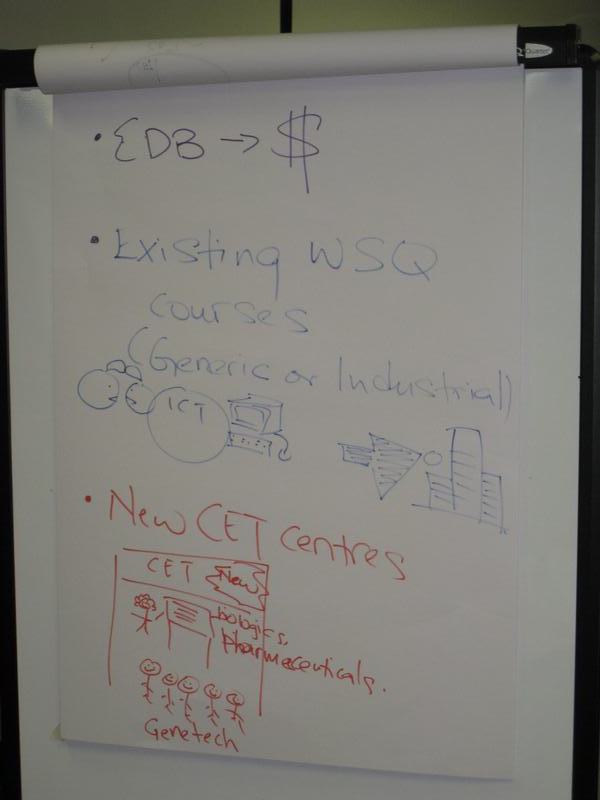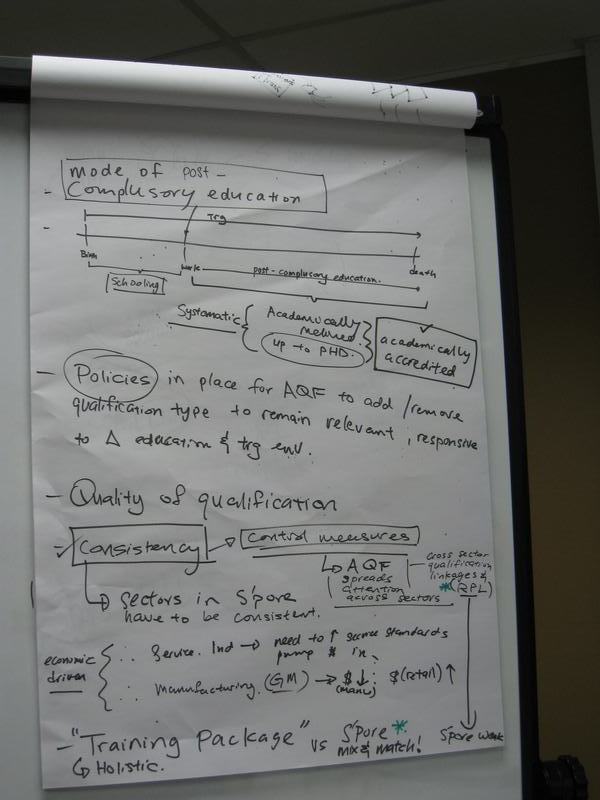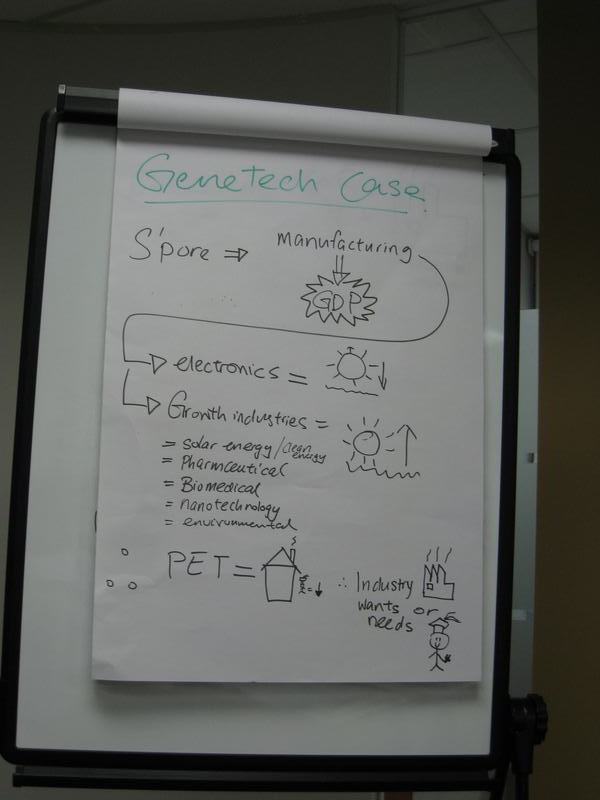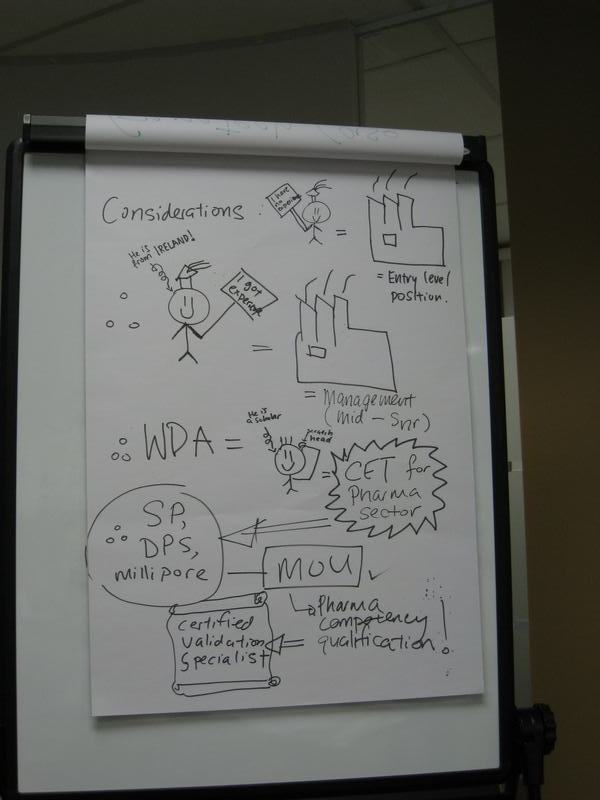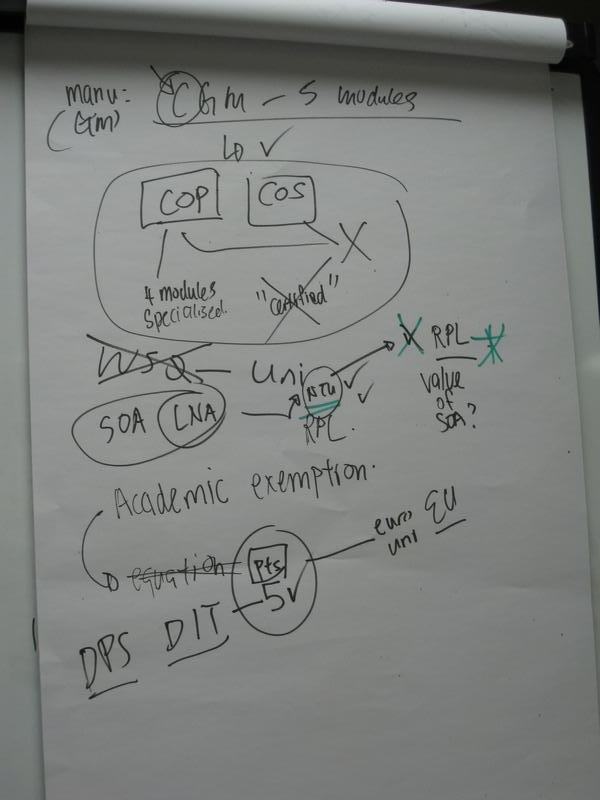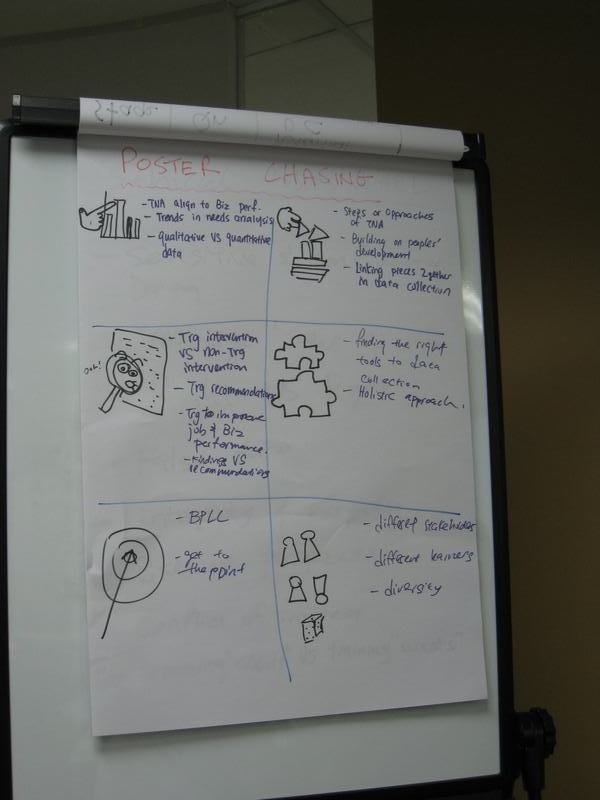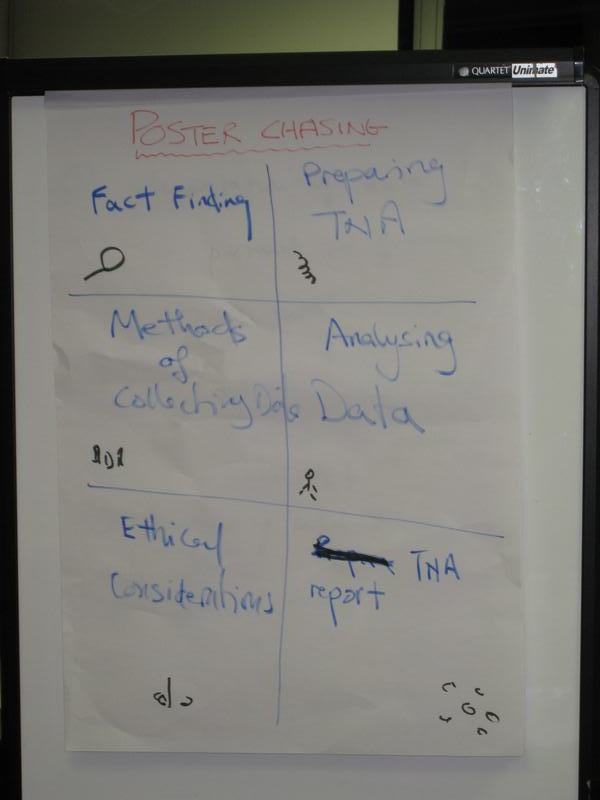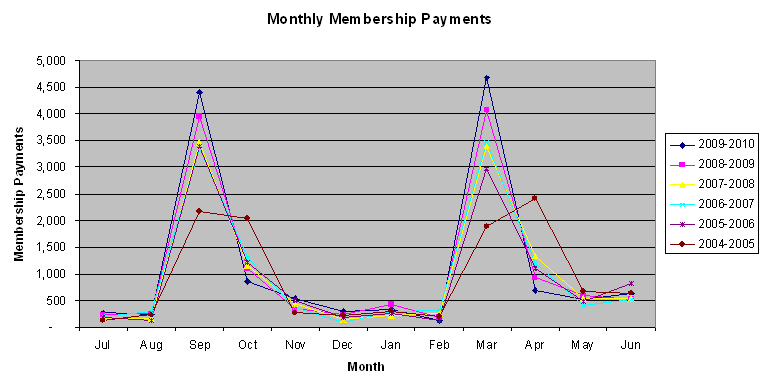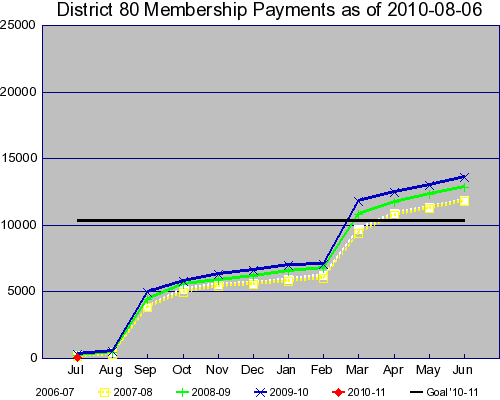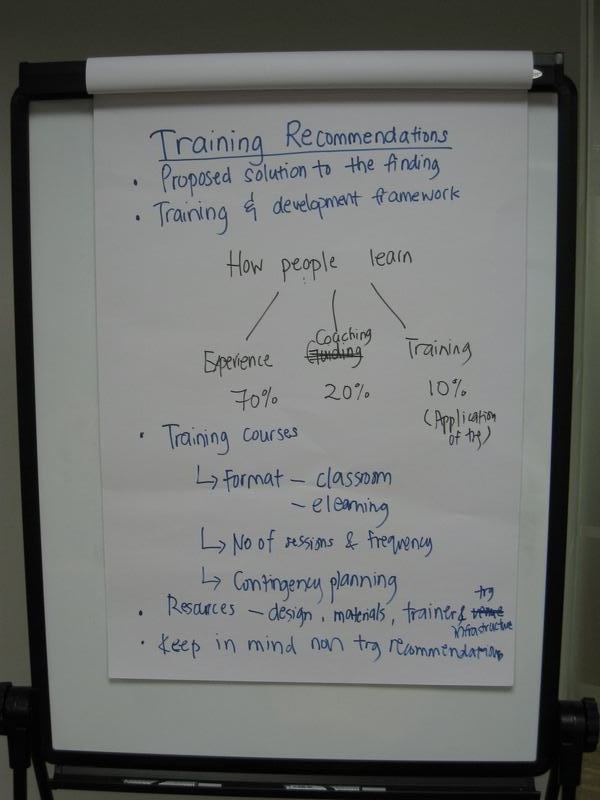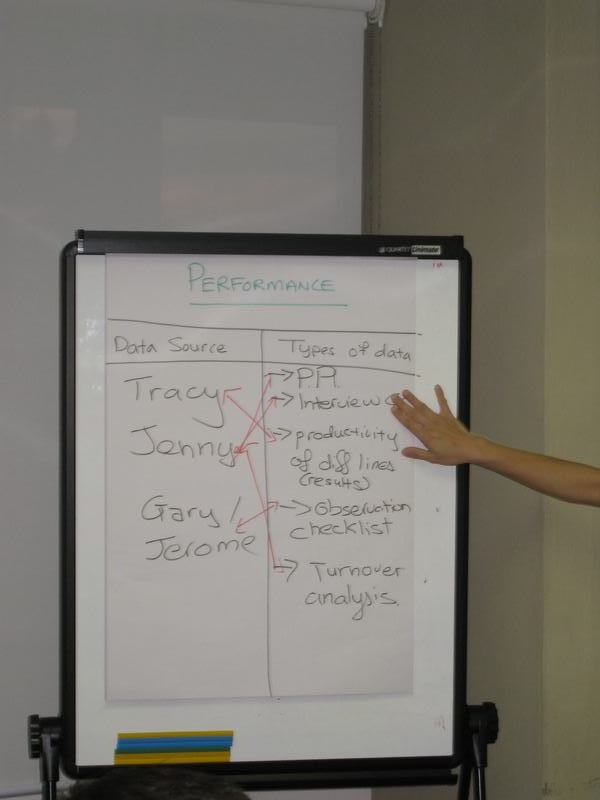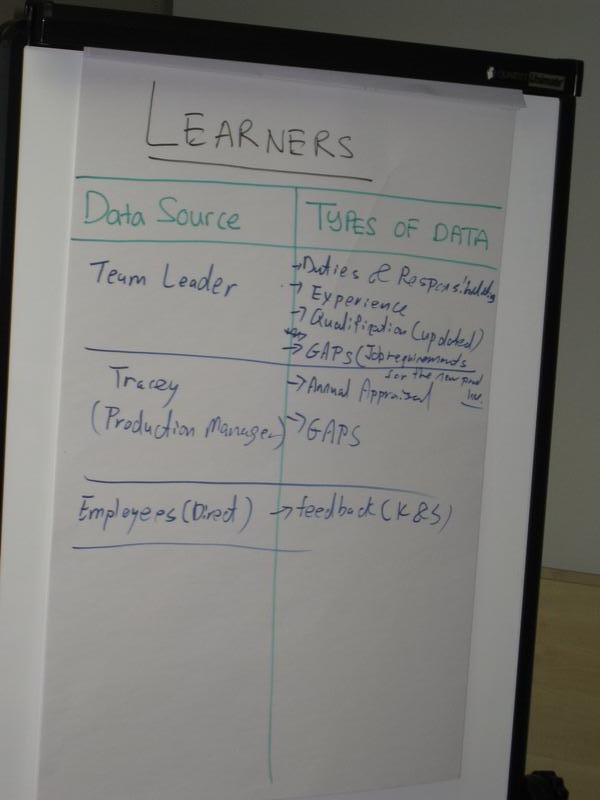It has been quite a while since I blogged as I have been busy with assignments and catching up on readings that I need for the 2 programs that I am currently attending. This article is definitely long overdue to all my faithful followers on Facebook, Twitter and Linkedin, and definitely super long overdue to all the Toastmasters that have attended the judging training conducted by District 80 and I promised to share with them on the links and materials to becoming a successful Contest Chairman.
I was invited by Michael Rodrigues DTM to help to conduct the Contest Chairman segment of District 80’s Competency in Judging Speech Contests Workshop that was on 26 August 2010 at AIA Changi. The training was fun and enriching for me, particularly that I tried a totally different method in facilitating the training session as compared to the usual methods. I tried engaging the participants of the judging contests workshop via experiential learning methods as I realized that there are many Toastmasters in the group that have the relevant experiences in managing and running a speech contest and all these experiences can be pieced together if everyone is given the opportunity to share and participate.
Experiential Learning is the process of making meaning from direct experience (Source: Wikipedia) and based on Kolb‘s experiential learning cycle, there are a total of 4 stages of learning; which are:
- Concrete Experience – an actual happening or event that triggers a learning experience and looking at things as they are, in raw detail without change
- Reflective Observation – the learner observes and reflect on that experience
- Abstract Conceptualization – abstract concepts are conceptualized and formed based on the reflection
- Active Experimentation – testing of the new concepts
Through the training session that I conducted and facilitated on the role of contest chairman for the judging speech contest workshop, I can personally see the active learning and contributions of the workshop participants as they work within their assigned groups. On closer observation, you can also see Kolb’s Experiential Learning Model in action, though all the 4 stages might not be as clearly visible as all learners have different levels of motivation and concentration for the workshop, bearing in mind that it has been one long day of training at AIA Changi.
It is interesting that once I started assigning each group with a task of producing flipcharts of “answers” to the different aspects (assignments which I gave them to work on) of organizing the speech contests to the roles and responsibilities of the contest chairman, many people quickly gathered in their teams to begin work and a wealth of past experiences from individuals within the groups are collected and consolidated into the flipcharts. The division of work among the groups are based on the following assignments below:
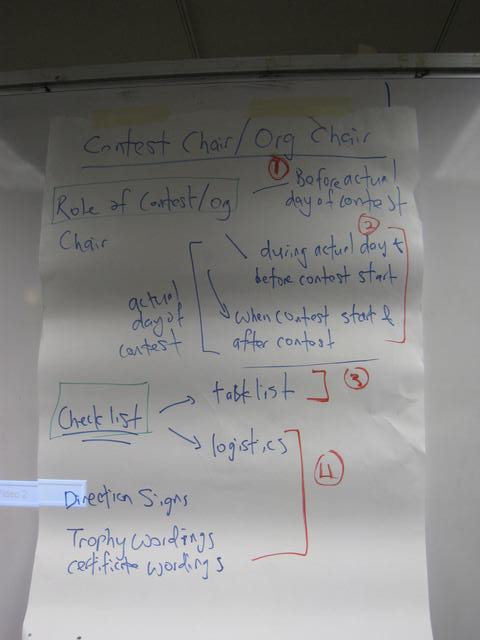

Some people take a lead in directing discussions among the groups. Some participated. Some listened attentively. It’s an amazing feeling to see the whole training place liven up with people working and collaborating in teams.
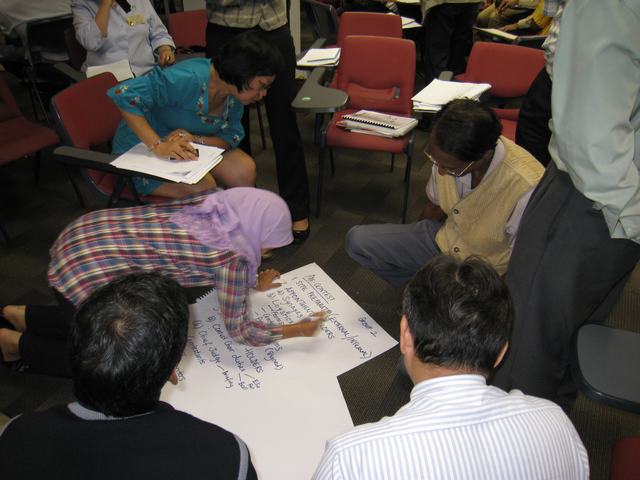


Here are the long awaited “answers” to the assignments given to the group and the beautiful works that each group produced for each given task.
Role & Responsibilities of Organizing Chairman
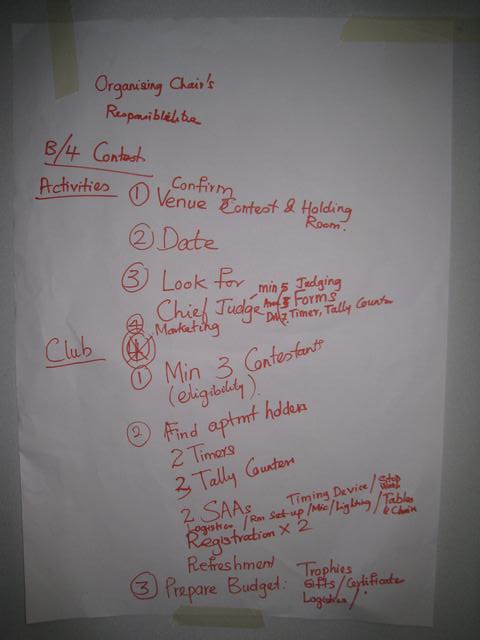


Task Checklists, Logistics & Certificates etc



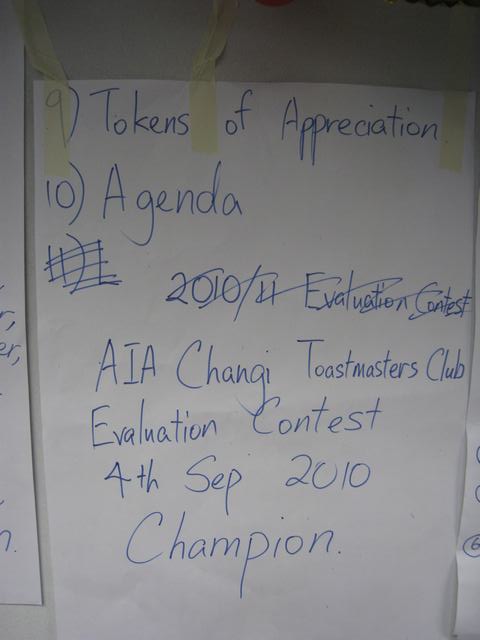
Briefing of Contestants

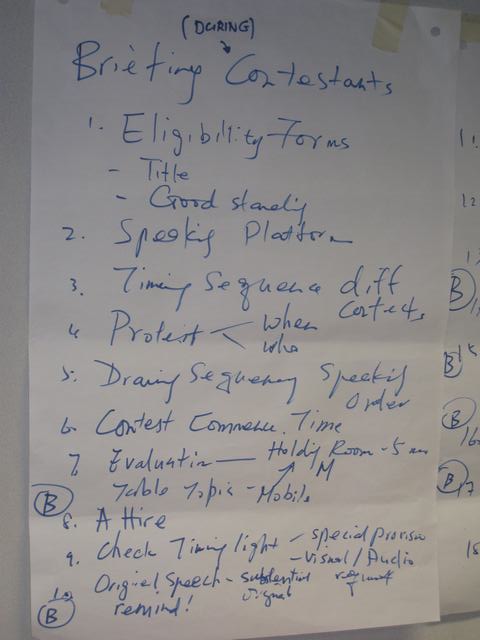


Briefing of SAAs

Promotional Plan, Flyer Details & Budget Templates

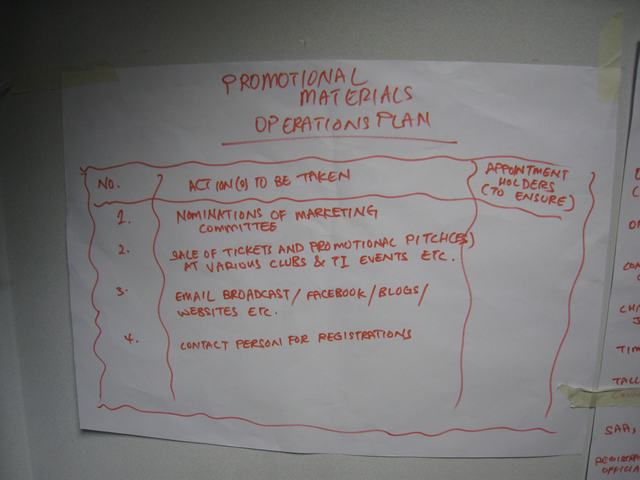

I am happy with the results that were produced and I believed it has been a wonderful experience facilitating this session, let alone that the participants were able to draw out their valuable experiences and learn from one another.
I will be consolidating the materials useful for the role of contest chairman, including the links to these materials found in other Toastmasters website. So stay tune for the next blog article where I will consolidate all these materials into one article.
